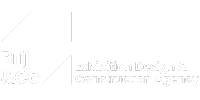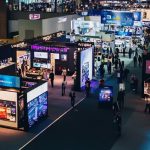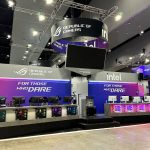Rethink engagement: from “nice booth” to “I need a demo today”
Most trade show teams measure success by footfall, scans, and a full fishbowl. The problem is that raw volume rarely converts. What you really want is time with the right buyers, memorable experiences that anchor your value, and clean data that fuels follow-up. That’s where interactive strategy earns its keep. When your trade show stands invite action—touch, try, test, and share—you shift from passive browsing to active discovery, signaling that your brand solves real problems on the show floor.
Build a flagship demo that lets visitors do the job they came to solve
Nothing beats a hands-on moment tied to a buyer’s day-to-day task. Design a “do it here” sequence that mirrors their workflow in under three minutes. If you sell tools, let prospects assemble a component safely. If you sell software, stage a guided micro-task on a kiosk with a crisp outcome screen. Place the station on a prominent corner of your product display stands so passing traffic instantly understands what you do. Your demo should be short, repeatable, and structured so a staffer can reset it in seconds and another visitor can start without waiting.
Use guided comparison bars on your product wall to teach, not pitch
Comparison is engagement. On your main wall, organise two or three “try me” modules that compare your solution versus the old way. Visitors slide, press, tap, or toggle and see results in real time—speed, weight, noise, brightness, accuracy, or yield. Keep labels plain and honest so the experience feels educational rather than salesy. These micro-experiments transform passive product display stands into decision-making tools, which is how interest turns into a qualified conversation.
Stage mini workshops on the hour to reset momentum and create appointment gravity
Live education creates appointment scarcity, as people show up on time and stay longer. Schedule ten-minute pulses each hour and publish the topics on a header screen. A product manager can walk through a common problem, then show a two-minute fix on the device or dashboard. Place stools in a shallow arc and keep the aisle clear so passers-by can listen without committing. Close with a single next step: book a deeper demo or collect a “workshop pack” via QR that opens a landing page with slides, spec sheets, and a calendar link right on their phone.
Layer AR or guided overlays to make complex features self-explanatory
Augmented overlays help prospects understand the hidden value in your hardware or software without a staffer narrating every step. Visitors point a tablet at a unit on your product display stands and see animated callouts, exploded views, or before-and-after simulations. Keep it tactile: place finger targets on the physical product so people know where to tap. This hybrid of physical and digital provokes questions like “Could we deploy this in our process?”—the moment your team can qualify budget, authority, and timeline.
Turn qualification into a game visitors actually want to play
Gamification works when it feels like practice, not a circus. Build a timed challenge where prospects complete a task that your solution accelerates in real life. Keep difficulty moderate and the leaderboard public. The prize can be practical—a training voucher, priority onboarding, or a premium accessory—so your target buyers, not swag hunters, lean in. At the station, your staffer asks two or three qualification questions conversationally while resetting the game. This is “booth gamification” that surfaces genuine opportunities and keeps queues forming organically.
Offer a diagnostics bar for instance, personalised recommendations
Set a bench where visitors can bring a sample, a file, or a scenario and get a quick readout. It could be a materials test, a workflow audit, or a performance benchmark. The output is a one-page prescription that visitors can email to themselves from a tablet, which also serves as lead capture with consent. Make the readout unmistakably helpful: a simple traffic-light score, a top-three action list, and a link to book a post-show consult. The value is immediate, and the follow-up story writes itself.
Capture data without killing the conversation
Long forms at stands destroy momentum. Replace them with a three-field flow on tablets: name, company email, and intent. Below that, offer two or three quick toggles that tag the interest area or timeframe. Staff see the profile on a companion screen so they can tailor the next minute of conversation. For busy peaks, place a QR that opens the same micro-form on a visitor’s device; once submitted, trigger an instant text or email with the promised resource and a calendar link. Good lead capture is invisible; it feels like part of helping, not admin.
Make social proof visible and alive, not laminated
Prospects trust peers more than promises. Dedicate a section of your trade show stands to live, rotating proof: a small screen cycling three short case clips, a ticker of recent install milestones, or a heatmap of customer locations. Tie proof back to the visitor’s use case with captions like “Cut assembly time by 32% in food manufacturing” or “Reduced returns 18% across multi-site retail.” Staff should be able to tap the clip, freeze a frame, and annotate or pause to answer questions. When proof is a conversation prop, not wallpaper, people stay.
Use your stand architecture to choreograph traffic and attention
Your engagement ideas only work if the stand layout supports them. Ask your exhibition stand builders Sydney team to zone the space into three layers: discovery at the perimeter, depth in the centre, and private consults at the rear or a quiet corner. Discovery includes demos and comparison modules that stop traffic. Depth is where workshops and AR overlays live. Private consults need acoustic treatment and a small table for scoping. Lighting should pick out the star products and the presenter’s face, not just the logo. A good builder will also plan cable runs, reset storage, and staff flows so your team can operate smoothly all day.
Give visitors a portable story they will share after the show
Every interactive moment should produce a takeaway that lives on the visitor’s phone. Workshop decks, demo videos, checklists, and quick calculators should be saved behind QR links so people can revisit them on the flight home. Brand the assets minimally and lead with utility. A purchasing manager forwarding your two-minute explainer to their CTO is stronger than a tote bag. When content travels, your stand keeps selling long after teardown.
Pre-show momentum: seed appointments before the doors open
Interactivity sells out when you announce it early. Two weeks before the show, send a short email and LinkedIn post that name your flagship demo, the workshop schedule, and what the diagnostics bar tests. Include a calendar link for timed sessions so qualified buyers can book a slot. Use a header image of your hero product display stands “under construction” to create curiosity. Consider a private-briefing email to existing customers; when users bring colleagues from other departments, you gain warm introductions on the stand.
On-stand staffing: host, coach, closer
Even brilliant ideas underperform with a flat staffing model. Assign a visible host to greet and triage, a coach to run demos and workshops, and a closer to handle qualified consults and bookings. Rotate roles every 90 minutes to keep energy high. Equip staff with a two-line pitch, three discovery questions, and a crisp handoff phrase like “Let me introduce you to Maya, our solutions engineer—she’ll run a quick diagnostic and map next steps.” You’re designing theatre with a sales purpose, not a script that feels robotic.
Post-show follow-up: replay the moment they remember
Within 48 hours, send personalised follow-ups that reference the exact interaction: the demo they tried, the workshop they attended, or the diagnostic score they received. Include the asset link again and one clear next action—book a site trial, request a tailored quote, or join a deeper webinar. For hot prospects, attach a one-paragraph summary of the business impact discussed at the stand so internal champions can easily forward it. Good follow-up doesn’t ask them to remember you; it reminds them why they stopped in the first place.
Measuring what matters so you can scale the winners
Track session counts for demos and workshops, dwell time, qualified scans, booked meetings, and opportunities created within seven working days. If a demo stalls lines but yields weak deals, simplify it. If workshops fill but don’t convert, tweak the close, not the content. Your analytics should distinguish between unqualified scans and meetings with buying roles. Over three shows, you’ll know which interactive elements deserve more space, lighting, and staff, and which should be retired.
Sustainability that strengthens engagement rather than adding cost
Interactive doesn’t mean wasteful. Build modular, re-skinable components for your trade show stands so graphic swaps, not rebuilds, mark each new show. Choose rental structures where possible and invest in high-quality, reusable product display stands that flat-pack efficiently. Digital takeaways replace printed stacks and reduce freight. Prospects appreciate a brand that respects budgets and the planet; it signals the same efficiency you claim your product delivers.
Why the right builder is your secret weapon
Experienced exhibition stand builders in Sydney turn ideas into ergonomics, sightlines, and safety. They’ll tell you when a demo needs more clearance, when lighting will wash out a screen, or when a queue will block the aisle. They’ll integrate power, data, and storage so resets are invisible and your staff stays focused on conversations. Most importantly, they’ll prototype the flow with you, so your interactivity feels intuitive from the first visitor to the last.
Bringing it together
Trade show engagement isn’t about louder screens or larger logos. It’s about moments of meaningful participation that prove your promise in under three minutes and invite a next step while attention is high. Start with a flagship demo, add short workshops, make proof interactive, and capture data that serves the visitor as much as your CRM. Design the space so each element supports the one before it and leads naturally to a consult. With the right plan—and the right partners in trade show stand builders Melbourne & Sydney—your stand can be the show’s most useful stop for the buyers who matter.








